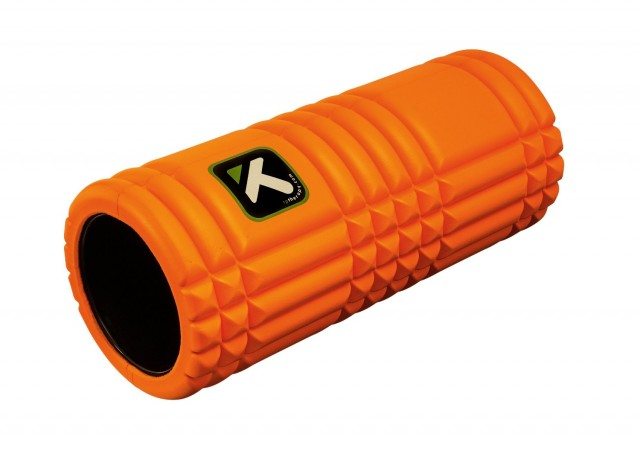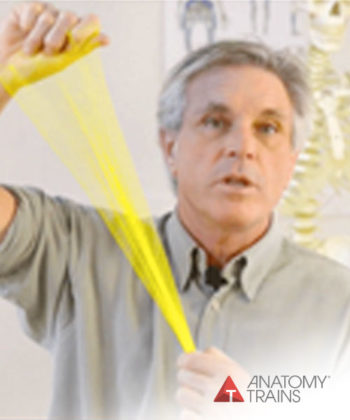 To roll or not to roll? That is the question.
To roll or not to roll? That is the question.
What is happening inside when you do foam rolling or use any types of balls or tools for self-myofascial release (SMR)?
For starters, you cannot foam roll fascia exclusively; all the other cells – nerve, muscle, and epithelia – are getting ‘rolled’ too.
In epithelial and muscle tissues, the water is squeezed out of the tissues, and then is sucked back in when the pressure moves on or is taken away. Like squeezing a sponge over the sink and then letting it fill again while doing the pots and pans, this is generally a good idea. As the old bedouin proverb has it: “Water still: poison! Water moving: life!”
Or as Paracelsus, the famous physician of the 16th century said: “There is but one disease, and its name is congestion.” To the degree that tissues are congested under the roller, it can definitely help liquefy and disperse such congestion.
It’s not going to make the muscle stronger, but there is initial evidence that it might make the arteries to them more elastic.
If we turn to the nerves’ reaction, rolling can certainly be ‘sensationful’. This is a negative if it is so painful it causes muscle contraction and cellular retraction, so I am not a fan of painful rolling. I prefer my clients stay in the pleasurable realm, or on the ‘hedonic point’ (poised between pleasure and pain).
Rolling through pain, however, can be helpful on previously traumatized areas – for instance, rolling over an old bone break – but we want the area to be pain-free when we’re done, not bruised or further traumatized. Bruising in general is, in my opinion, almost always a sign of tissue damage, not of healing. Moving slowly over the tool is very important in a painful area.
All that said, you can also use rolling to awaken areas of ‘sensori-motor amnesia’ – to bring sensation into places that you (or the client) are not moving in daily life. Two things about this:
1) your iliotibial band (ITB) is not a place of sensori-motor amnesia; it bumps up against the rest of the world and is thus stimulated every day. Some of the most likely areas to be ‘amnesiac’ are hard to find and hard to roll – like the whole adductor quadrant on the inside of the thigh, and obscure and tiny (but important) areas in the deep lateral rotators on the backof the hip, or right under your head in the upper neck.
2) we tend to miss our own amnesiac areas, for the very simple reason that cannot feel them so we don’t know where they are. Here we can be of help to our clients to make sure they are rolling the bits that need rolling, not just repetitiously rolling the obvious and available bits, like the ITB or the superficial back muscles.
To put this into practice, instead of rolling the gluteals and the easily available part of the ITB, try using the roller or tool just under the edge of the iliac crest (its distal or inferior edge, right at the top of the gluteals). Work the tool under the edge of the bone, and roll down, away from the bone, for 1/2” to 1” (2-3cm). Work your way along the whole edge doing this, from the anterior to the posterior spine (ASIS to PSIS). This area, often missed in both bodywork and SMR, will produce new results, new sensations, new hydration.
Or at the other end of the ITB, get the working surface of the roller on the outside of the knee, just between the end of the ITB on the tibial condyle and the head of the fibula. Work slow into this area, rotating the leg in small movements over the roller. This can help free the fibular head to be responsive to your rotational movements in sport, especially in sports where you plant your foot and twist like tennis or football. Continued below…
Recommended
Fascia In Movement Video Series
$125.00Learn how the fascia responds to stretch, exercise, and movement. This video series brings together Tom Myers’ 40 years experience in fascial therapy with the latest research on tissue elasticity, responses to loading, injury, and the internal body sense. No matter what approach you practice, you are working with the fascia – get better results… Read more
Add to cartSo, you can use the rollers and tools to awaken sensation, but a number of people ask me about the effect of the foam rolling on the fascia, since it is often touted as a benefit. At the risk of offending some, here goes:
Every time I go to the gym, there’s someone on a mat in the corner, rolling out their iliotibial band, up and down, with a grimace of pain. This practice, to put it gently, has limited value.
Big heavy sheets of fascia – the iliotibial band, the thoracolumbar fascia, the plantar fascia – cannot be ‘lengthened’ through foam rolling, so please don’t say that to your clients or even think it for yourself. A foam-rolled foot can feel better and more alive and have reduced inflammation maybe (often only temporarily), but if walking on it thousands of steps a day hasn’t lengthened it, a few swipes on a foam roller ain’t gonna do it either. You can increase hydration, increase sensation, and maybe ‘melt’ some of the fascial bonding on the edges to give it more movement freedom, but the pressure required to get a significant change on overall length would send the client screaming – rightfully – for the door. This is math, not opinion.
Secondly, I don’t see or feel the value in holding a single point for an extended period of time, unless it is an acupuncture point or ‘tsubo’ that needs a sustained pressure for energetic reasons. In most applications, a slow motion move is better than a static pressure. There is a value in creating pressure on a trigger point (as long as the pressure is really into the sensational heart of that tight band), but if the pressure is on the right point, 20-30 seconds max should hydrate that tissue and encourage the trigger point to disappear. More time won’t help; more accuracy of placement will.
Thirdly, point pressure doesn’t necessarily create the ‘shear’ force necessary to break up the adhesions between fascial planes – which is the commonest form of movement restriction. To separate – for instance – the ITB from the epimysium of the vastus lateralis beneath it, rolling won’t get you there. If the roller has a ‘grabby’ enough surface, you can hold it still on the floor with your hand or some blocks (or use a half-roller), and then slide your body over it – again, slowly and mindfully. This may create a burning sensation, like the Indian rope burn your older brother did on you, but this burning is the two fascial planes coming apart. Stay slow to keep that sensation within bounds, but it is not a negative indication.
You can, with practice, achieve this shear between the skin and the underlying muscles, or between muscle groups, or between sheets of fascia like the many layers of the thoraco-lumbar fascia. This is the chief element that ‘rolling’ misses – the roller must stay still and the client move on it to get this essential shearing effect.
Now of course, as a bodyworker for 40+ years, I value the knowing hand over the unknowing object as a tool for inner body change. I can create this shear through positioning the client and adjusting my hand pressure and position constantly via sensory feedback, so I am better than a foam roller. I can see and find the ‘silent’ places of tension they don’t even know about and awaken them or ease them. I can see the whole pattern and create treatments that progressively free these adhesions in an integrated fashion. I can feel when it’s ‘cooked’.
But not everyone can afford bodywork, so using a tool can be a cheap and cheerful way of getting some of the same effects. When you do, I offer the following advice:
1) Move slowly. Fast rolling is less effective at ‘squeezing the sponge’, and can result in creating useless muscle tension, bruising, and perhaps receptor damage. The deeper you are going, the more slowly you should move.
2) Look for ‘unknown’ places. Doing the same rolling program continually has rapidly diminishing returns. Keep rolling different places in your body, and look for the places you haven’t touched yet, and get in there. For example: Lying on your side and rolling the inner side of your upper thigh over the roller. Rolling the front and back of your armpit. Your back has many. many layers and can be usefully rolled at deeper levels, but will not respond to the same-old-same-old.
3) Hold the roller or tool still and move over it to create ‘shear’ that will de-adhese the fascial planes.
To roll or not to roll? The answer is another paraphrase from Hamlet: “There is nothing either good or bad, but thinking makes it so.” Rolling that is mindful, slow, and perceptive is way more useful than painful rolling that is done quickly while texting, listening to music, and eyeing the hottie on the other side of the gym.
–Tom Myers, April 27 2015






